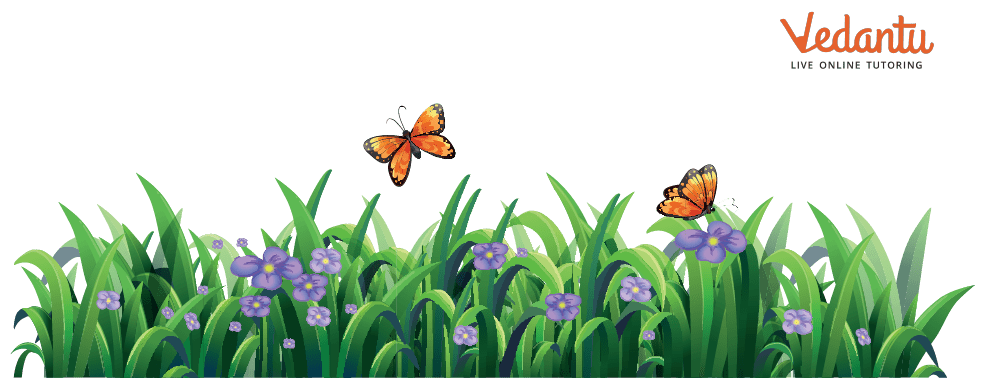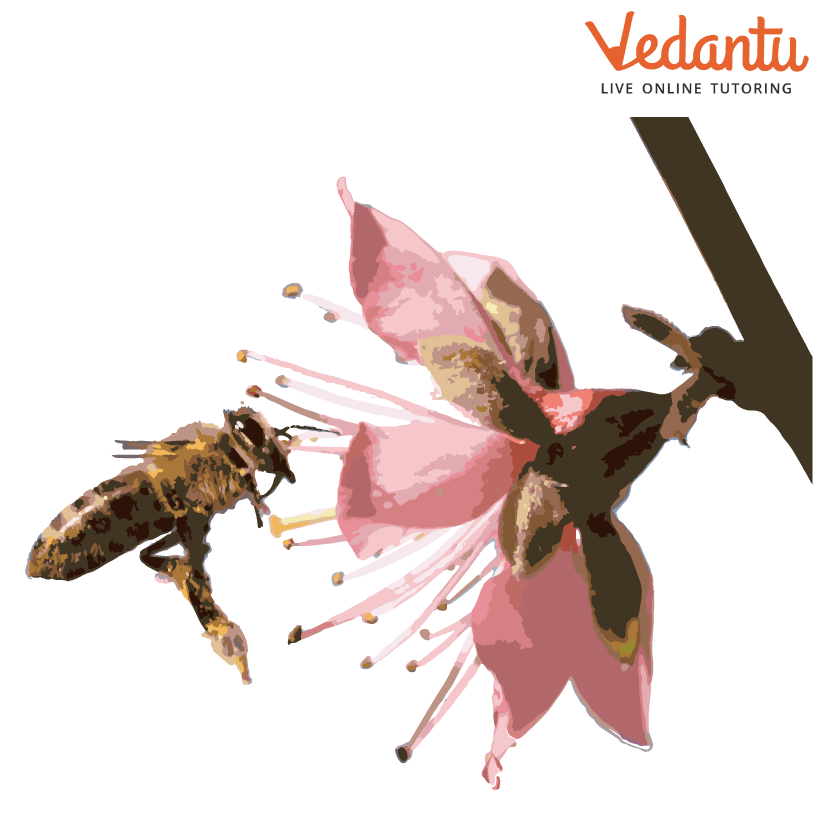




Key Types of Pollination and Their Importance in Nature
Pollen is necessary for flowering plants and plants that make cones to reproduce sexually. Each grain of pollen carries the male gametes required for fertilisation. Pollen is essential for sexual reproduction in plants that produce cones and flowers. Every pollen grain contains the necessary male gametes for fertilisation.
Pollen is created in pollen cones by plants that bear cones. Pollen is produced in the anthers of flowers by flowering plants.
The stamen's anthers are where pollen is made.
The male DNA of a plant is transferred to the female portion of the flower by pollen, which enables the plant to reproduce.
Every living thing, including plants, aspires to reproduce to sustain future generations.

Pollination Happening with Two Butterflies
Pollination
It facilitates fertilisation and the development of seeds. Pollination is the movement of pollen from an anther of a plant to the stigma of a plant, most frequently by an animal or wind. Making seeds is one method through which plants can create offspring. The genetic material needed to create a new plant is found in seeds. Pollen may drop off the flower's stigma when the animal visits another flower for the same purpose.
Plants create their seeds using flowers as their tools.
Only when pollen is exchanged between flowers of the same species.
The unexpected result of an animal's activities on a flower is typically pollination.
Pollination is the sole means of reproduction for all flowering plants. Self-pollination and cross-pollination are the two types of pollination.
Functions of Pollen
The ultimate purpose of pollen is to transfer male gametes from a plant's stamen to an ovule, where they will fertilise an egg, which will later grow into a seed.
It is released into the air and carried by the wind during the spring, summer, and fall seasons. The wind spreads it to other plants so they can produce seeds.
The male component of plant and tree reproduction is represented by pollen grains.
Join the female portion of the plant and form a new seed; these tiny creatures circulate in the air and on insects' legs.
It helps to get attached to other pollinators when dispersed in the air.
Bee Pollination
The bee's senses have been adapted to identify signals sent by flowers by their colour and scent on the one hand. Bees have colour vision.
Bees may see UV light, and flowering plants "know" this. UV-reflecting pigments are present in them. This implies that the bees know the best landing spots and the locations of the nectar sources.
Bees use their antennae to smell. They can sense it physically, which allows them to locate the source of the scent and move directly toward the flowering plant to pollinate it and gather nectar.
The bees gather up pollen nearly as they fly, mainly utilised to rear the colony and include a lot of protein.
Bees always seek out the best conditions and make honey from the fewest number of flower sources.

Bee Pollination
Conclusion
The process of pollination is essential to the life cycle of plants. Pollen is transported between flowering plants by insects, birds, bats, and the wind, allowing the plants to create seeds and reproduce. The wind gathers pollen that has been released into the atmosphere. The wind spreads it to other plants so they can produce seeds. Bees can land in the best locations because they know nearby nectar sources. The nectar, the source of honey, is ingested by the bees.
FAQs on Pollination Made Simple: Essential Guide for Students
1. What is pollination in simple words for kids?
Think of pollination as a delivery service for plants. It's the process of moving tiny yellow dust called pollen from one part of a flower to another, or from one flower to another flower. This special delivery is essential because it helps the plant make seeds and eventually grow new baby plants.
2. What is the main job of pollen in a flower?
Pollen contains the special ingredients needed to make a new seed. Its main job is to travel from the male part of a flower (the anther) to the female part (the stigma). Once the pollen lands on the stigma, the flower can begin the process of making a seed, which can later grow into a completely new plant.
3. Why is pollination so important for plants and for us?
Pollination is very important for a few big reasons:
- For Plants: It is the main way most flowering plants reproduce, or make new plants. Without it, many types of flowers, trees, and other plants could not create seeds and would disappear.
- For People and Animals: Many of the fruits and vegetables we love to eat, like apples, oranges, cucumbers, and almonds, only grow after their flowers have been pollinated. So, pollination helps create the food we depend on.
4. What are the two main types of pollination?
The two main types are self-pollination and cross-pollination. In self-pollination, a flower pollinates itself using its own pollen. In cross-pollination, pollen travels from one flower to a completely different flower of the same kind, which helps mix things up.
5. What is the difference between self-pollination and cross-pollination?
The key difference is where the pollen comes from.
- Self-pollination happens when pollen from a flower's anther lands on the stigma of the very same flower or another flower on the same plant.
- Cross-pollination happens when pollen from one flower is carried to the stigma of a different flower on another plant (of the same species). This often leads to stronger plants.
6. Who are the 'helpers' that carry pollen between flowers?
Plants have many natural helpers, called pollinators, to move their pollen around. The most common examples of pollinators are:
- Insects: Bees, butterflies, and moths are famous pollinators.
- Animals: Birds like hummingbirds and even some mammals like bats can carry pollen.
- The Wind: For some plants like corn and grass, the wind simply blows the light pollen from one plant to another.
7. How do bees help with pollination?
When a bee lands on a flower to drink its sweet juice, called nectar, the sticky pollen gets stuck all over its fuzzy body. When the bee flies to the next flower for more nectar, some of that pollen rubs off onto the new flower's stigma. The bee is just looking for food, but it accidentally provides a perfect pollination service for the plant!
8. What happens to a flower after it gets pollinated?
After a flower is successfully pollinated, it begins to transform. The pollen helps an egg inside the flower develop into a seed. As the seed grows, the flower's petals will wilt and fall off, and the base of the flower often swells and turns into a fruit that protects the seed or seeds inside. An apple, for example, is what's left of a pollinated apple blossom.
9. Can pollination happen without any insects like bees or butterflies?
Yes, absolutely! While insects are famous pollinators, they are not the only way. Many plants are adapted for wind pollination. These plants, such as grasses, corn, and many large trees, produce large amounts of very light pollen. The wind picks up this pollen and carries it through the air, and by chance, some of it lands on the right kind of flowers to pollinate them.









